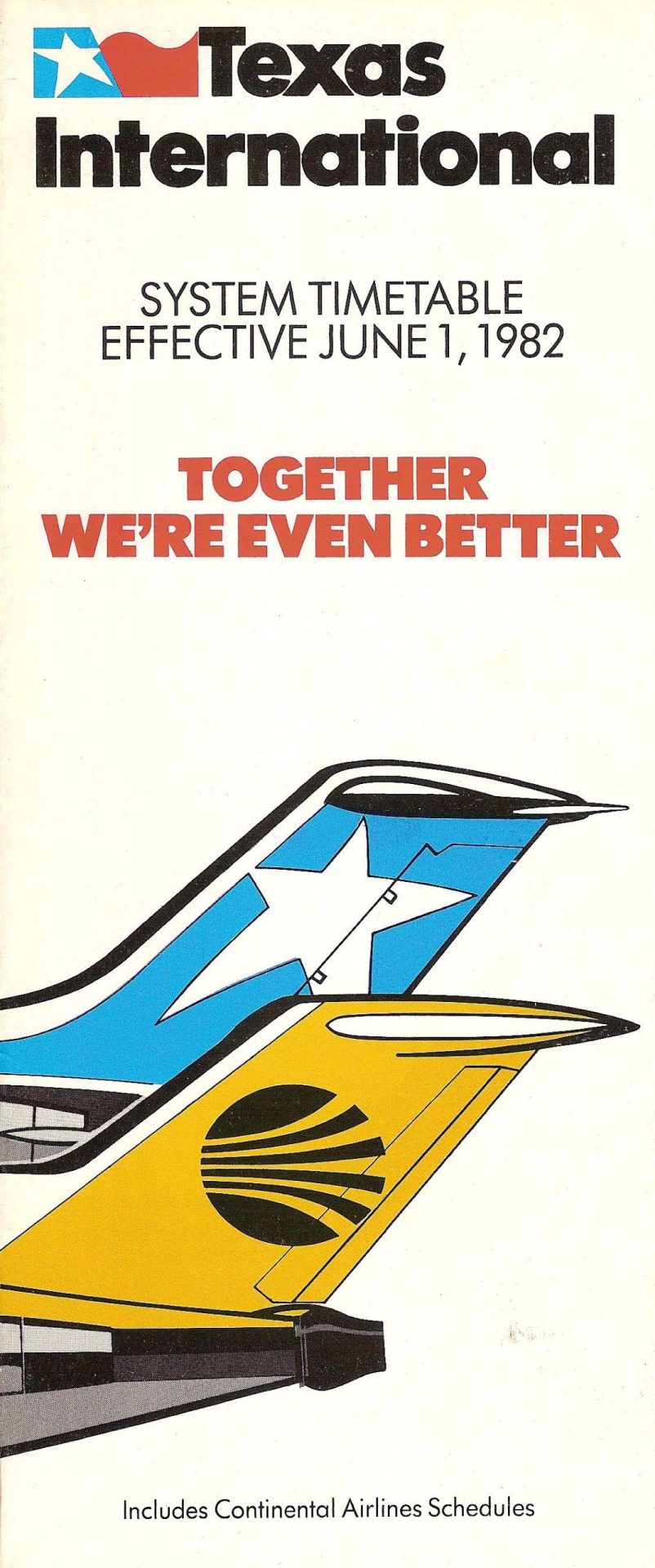Everyone knows that Texas is big – 268,596 square miles according to the Texas Almanac – bigger than all of the New England and the Mid-Atlantic states put together. So, it is little wonder that, when the Civil Aeronautics Board (CAB) was issuing certificates for the newly-conceived feeder airlines in the late 1940s, Texas got an airline all its own. The company, called Aviation Enterprises, was certified to serve 28 airports over a 1,906-mile route system, all within the Lone Star State.
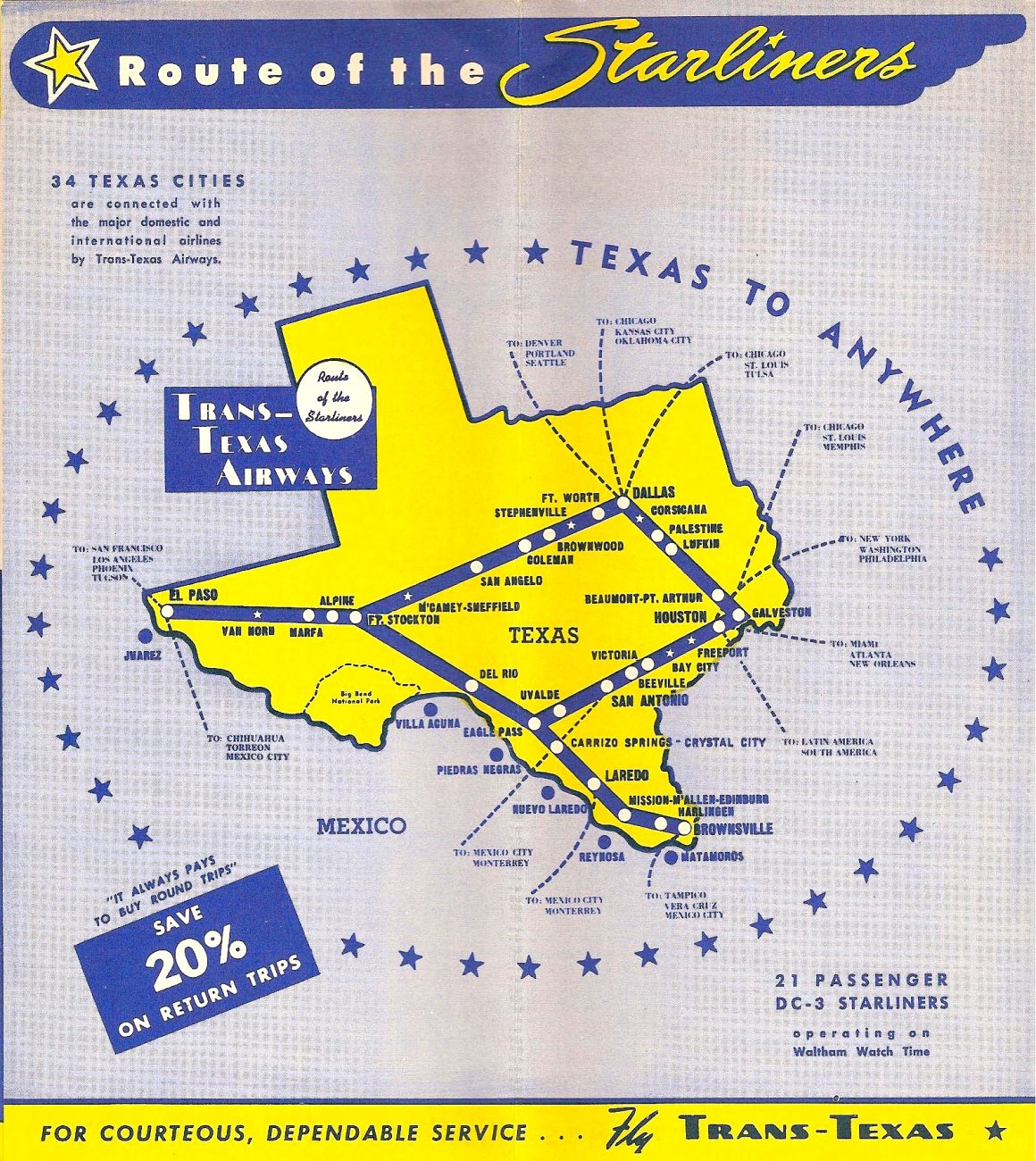
Founded in 1940 by R. Earl McKaughan, Aviation Enterprises was a fixed base operator (FBO) at Houston’s Municipal Airport (later renamed William P. Hobby Airport) offering maintenance services, flight instruction, and aircraft charters. During World War II, the company performed exceptional work for the government by training hundreds of ferry pilots for the Women Air Force Service Pilots (WASP) program at Avenger Field in Sweetwater, Texas.
A more suitable name was needed now, one that would catch the public’s attention. The perfect moniker was chosen in June 1947, several months before the first flight took off, when the bland-sounding Aviation Enterprises, Inc. officially became Trans-Texas Airways (TTA).
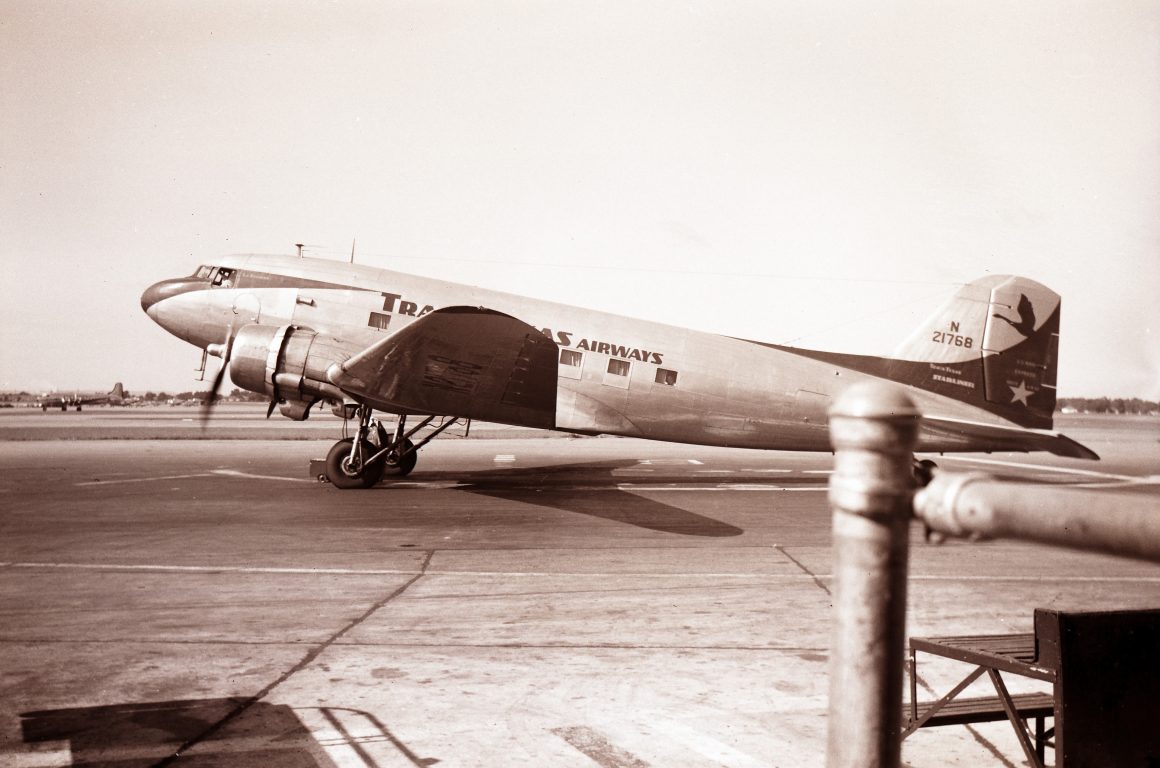
THE ORIGINAL TRANS-TEXAS AIRWAYS NETWORK
Five routes had been awarded to the company. They stretched from Houston to Dallas, Houston to San Antonio, from San Antonio to El Paso, and from Dallas to Ft Stockton. A branch also extended south along the Rio Grande from Eagle Pass to Brownsville. Each route served several intermediate cities, which was the purpose of the new feeder carriers: to bring air service to smaller cities and isolated communities.
Back in 1942, a song entitled “Deep in the Heart of Texas” had risen to the top of the chart on America’s favorite radio music program, “Your Hit Parade”. The lyrics stated that “The stars at night are big and bright deep in the heart of Texas”. Whether or not the song influenced TTA’s managers is unknown, but the new airline of the Lone Star State dubbed its DC-3s “Starliners” when they took to the air and they would be referred to as such for years to come.
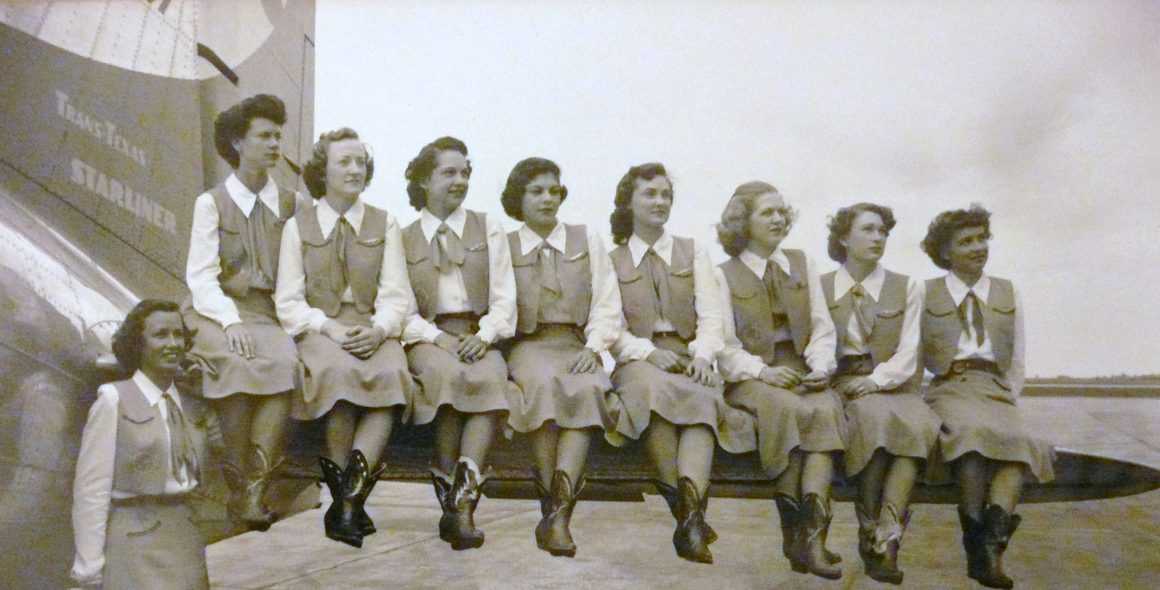
TRANS-TEXAS AIRWAYS SERVICE BEGINS
Two DC-3s began serving eight Texas cities on 11 October 1947, and the entire statewide network was in operation by June 1948.
Trans-Texas Airways’ first flights were attended by stewards, but the company quickly transitioned to an all-female cabin staff, a corps that would become the talk of the industry because of their uniforms. Decked out in western boots, vest, neck scarf, traditional hat, blouse, and skirt, TTA’s ‘cowgirls’ sported the most unique uniform in the ‘Lower 48’ continental United States. The airline’s female flight attendants would continue to wear updated versions of the cowgirl uniform well into the 1960s.

TRANS-TEXAS AIRWAYS NEARLY DIES
From January through November 1948, TTA’s average revenue passenger load per flight was a dismal 2.81. Like the other local service carriers, Trans-Texas relied heavily on government subsidies to cover losses incurred from providing service to small cities. However, for TTA, the average passenger journey represented an operating cost of $38.61, of which the passenger paid only $10.86. The government made up the difference.
Because of such disappointing statistics, on 4 April 1949, the CAB issued an order directing Trans-Texas Airways to show cause why its operating certificate should not be allowed to expire.
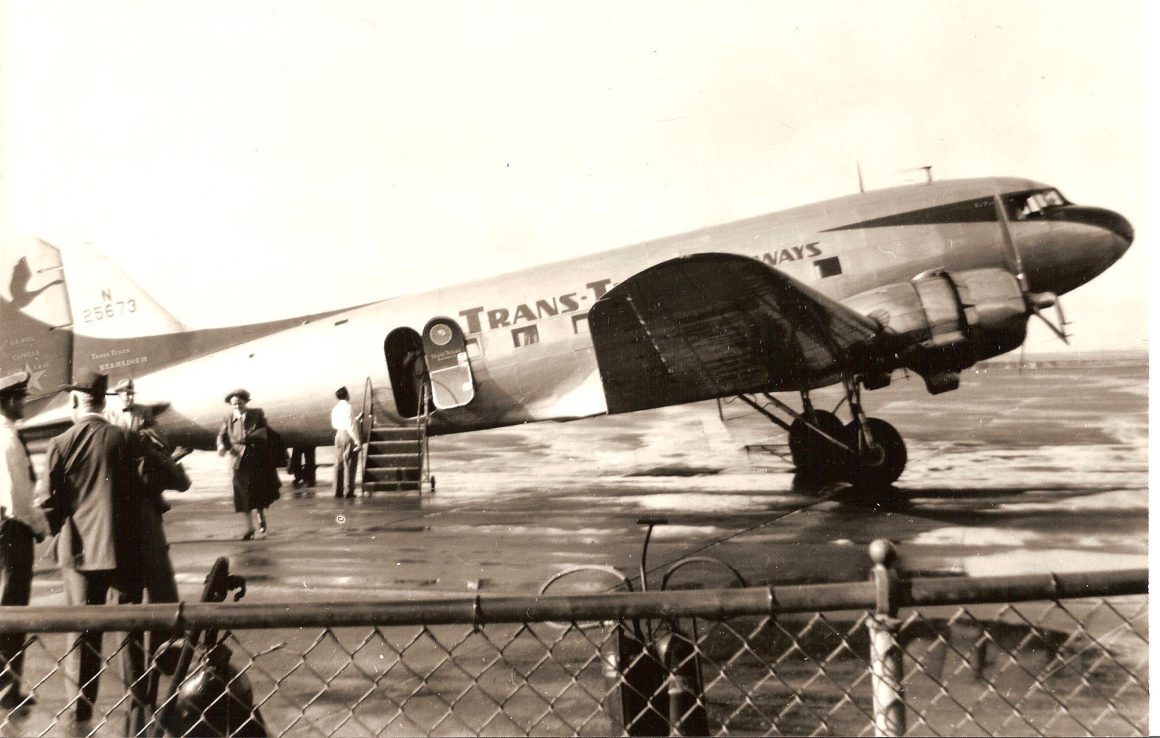
Fortunately, the airline had hired former Texas Governor Charles V. Allred to serve as TTA’s Vice-President and General Counsel. Allred got to work reaching out to friends statewide. No fewer than 69 members of the chambers of commerce and the local governments of cities served by Trans-Texas, as well as representatives of companies reliant upon TTA service, appeared before the CAB, along with six state Congressmen. The evidence presented and the testimonials given at the hearings to determine the company’s fate were successful. With minor adjustments to its route system, including the elimination of some cities and the addition of a couple of new destinations, TTA’s certificate was renewed by the Board on 5 February 1951 for an additional three years.
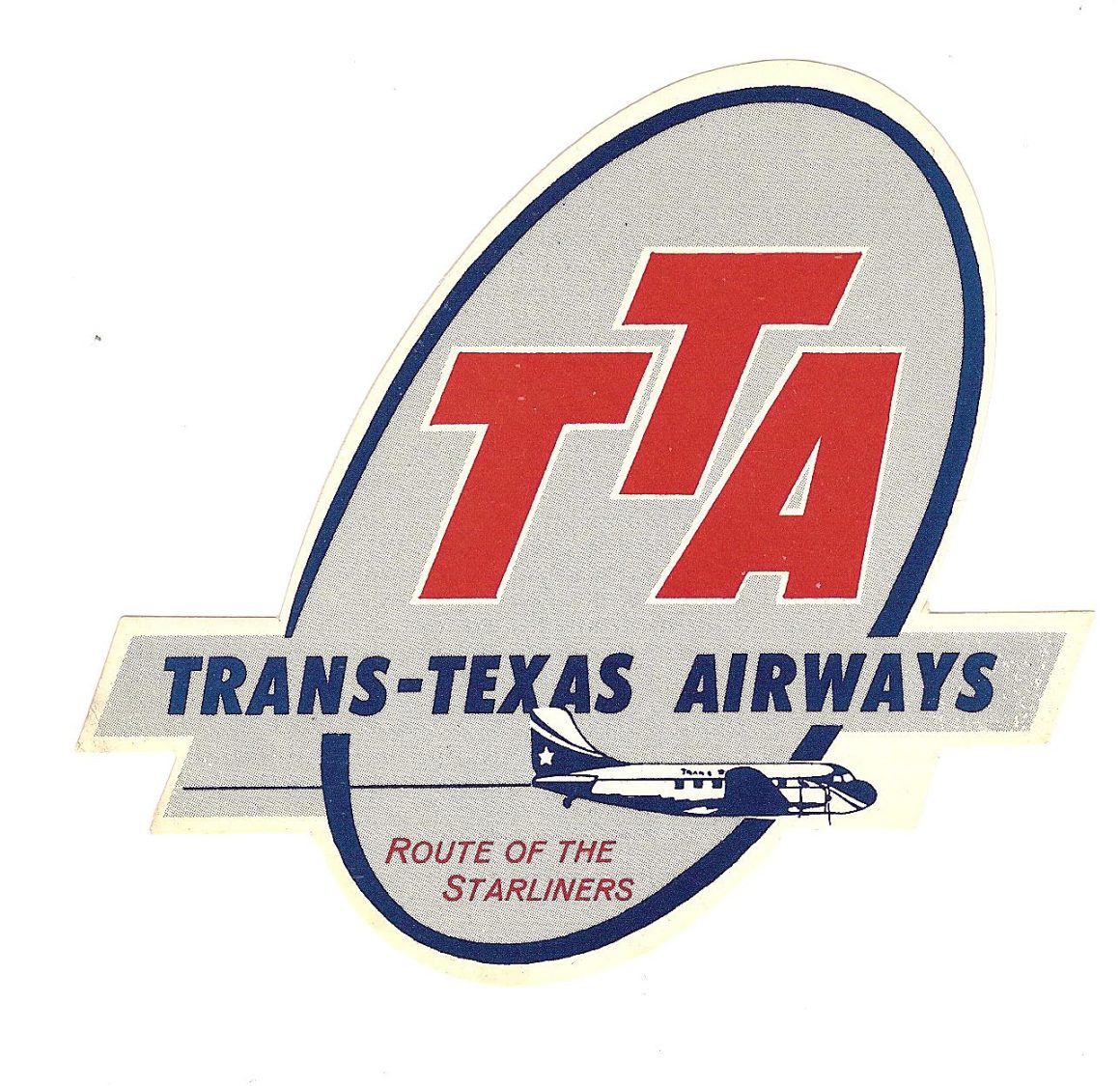
ONE GOVERNOR IS REPLACED BY ANOTHER
Former Governor James V. Allred left TTA’s employ in 1949 when he was appointed to a federal judgeship by President Harry S. Truman. He was replaced in his position as General Counsel for TTA by a future Governor of Texas, John B. Connally, the man who would achieve notoriety as being the other person shot while riding in President Kennedy’s limousine in Dallas in 1963.
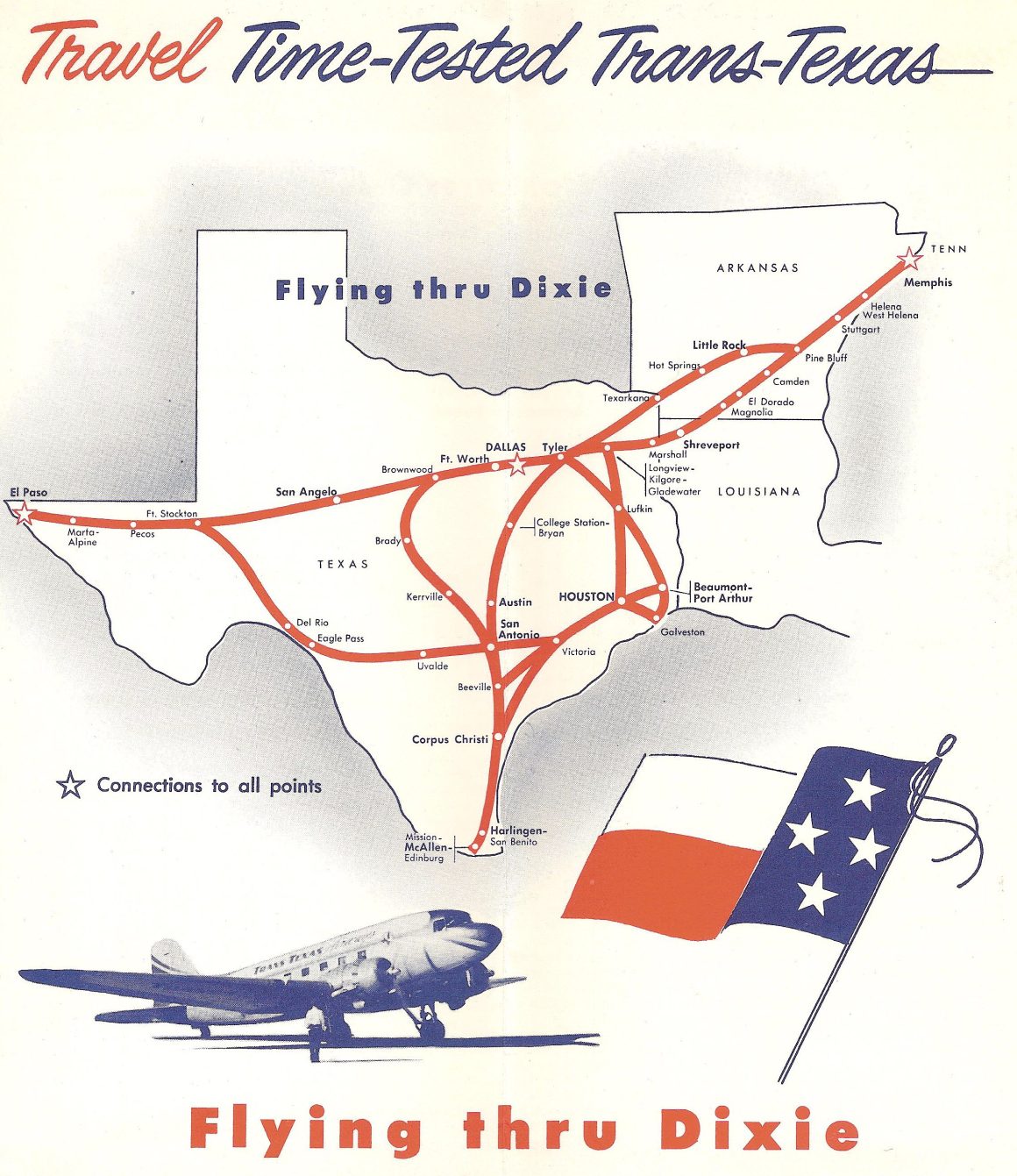
ROUTE EXPANSION
TTA finally received authority to expand beyond the borders of Texas in 1953. Service was inaugurated to nine airports in Arkansas, Shreveport, Louisiana, and Memphis, Tennessee. Six new stations in Texas, including Austin, the state capital, were also added to TTA’s route map, while the airline was allowed to suspend operations at the underperforming cities of Alice, Nacogdoches, and McCamey.
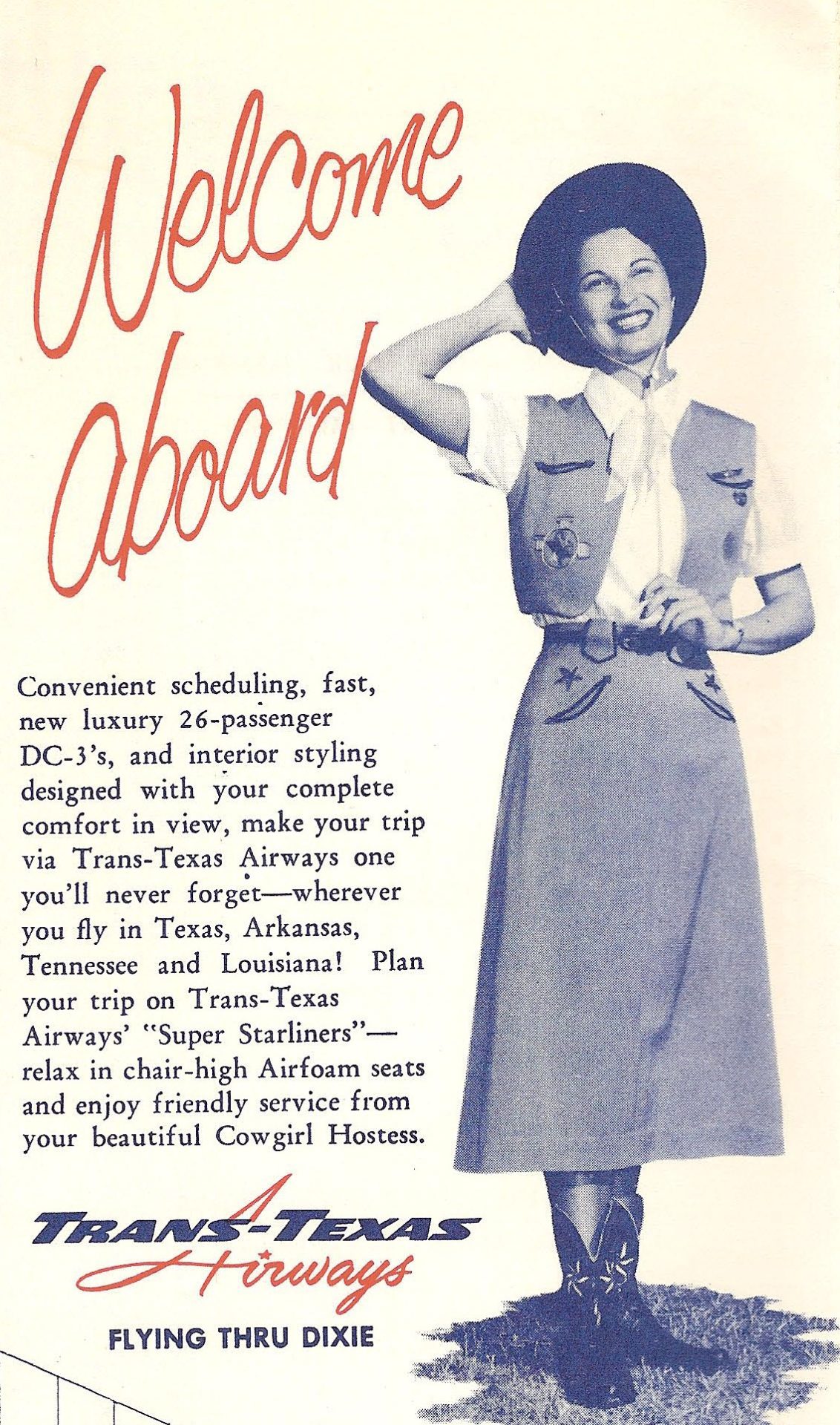
On 1 January 1956, TTA expanded further by linking Laredo with San Antonio, Austin, Fort Worth, and Dallas, a major route across Texas touching five of the state’s important cities. On 22 January, the airline also inaugurated service to Lake Charles and Lafayette, Louisiana.

STARLINERS BECOME SUPER STARLINERS
In 1957, the company announced an upgrade program to enhance the performance of each of its DC-3s. The retrofit program included the installation of wheel-well doors, a redesigned engine cowling and oil cooler package, a tail wheel-well enclosure, and what was referred to as a Siamese exhaust system. Cruising speed, range, and payload were all increased because of the improvements. The DC-3 upgrade program was announced at the company’s Houston headquarters by Earl McKaughan’s son, R.E. “Dick” McKaughan, Jr., the company’s Director of Flight Operations. The airline’s 20 revamped DC-3s would henceforth be known as TTA ‘Super Starliners’.

MORE GROWTH
In 1959, the CAB gave TTA another boost: 1,200 new miles and seven new cities were added to the airline’s map: Alexandria, De Ridder, Monroe, Morgan City, New Orleans, Louisiana, and Natchez and Jackson in Mississippi.
More route development took place in 1959 as Trans-Texas began offering non-stop flights from both Houston and San Antonio to the Rio Grande Valley (Harlingen, Texas). At the other end of the state, Midland / Odessa received TTA service for the first time.

CONVAIRS
Even though its DC-3s had been reconditioned, TTA now required larger and more modern aircraft to serve its expanding route system. The company signed a deal with American Airlines to acquire 25 of that airline’s Convair 240s as they were retired from the larger carrier over the course of the next seven years.
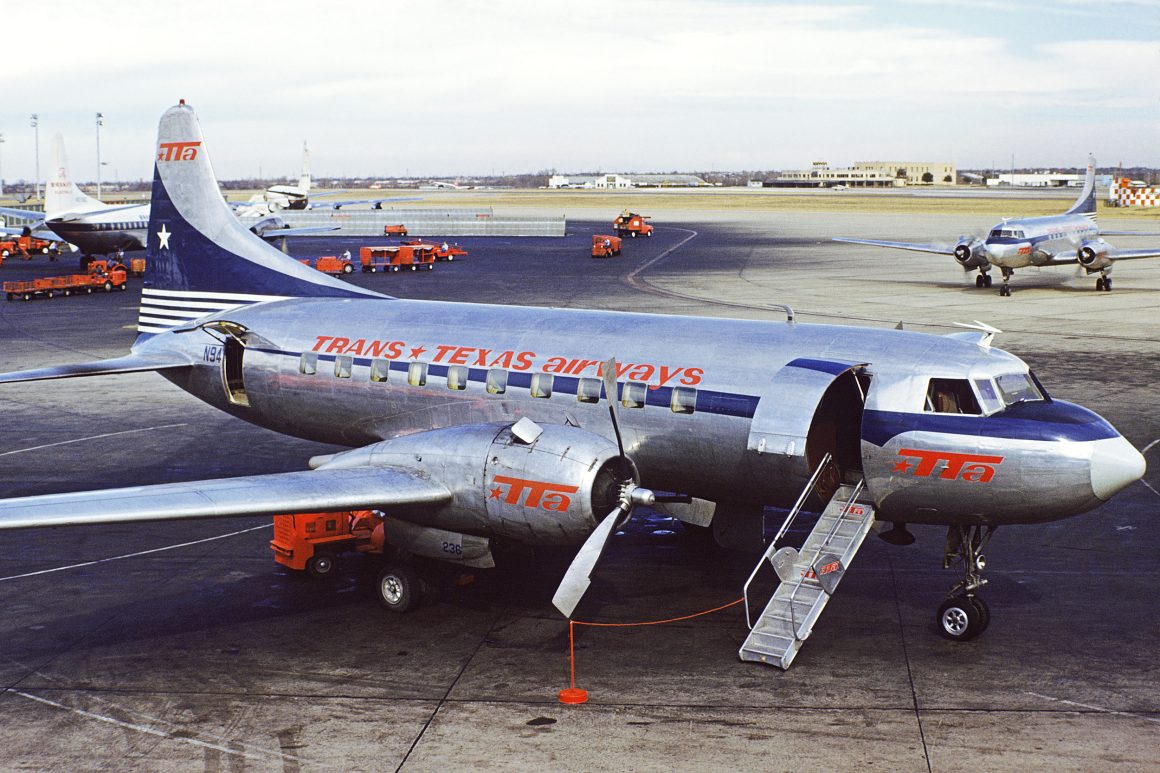
The 40-passenger Convairs could hardly be called ‘new’ airliners, although they were of postwar design, not pre-war like the DC-3s. Having initially entered service with American Airlines in 1948, the Convair 240 brought several advancements to TTA passengers. Most importantly, it was both pressurized and air-conditioned. Its tricycle landing gear meant that passengers didn’t have to climb uphill as they did when boarding a DC-3. The aircraft also offered carry-on luggage racks for customers.
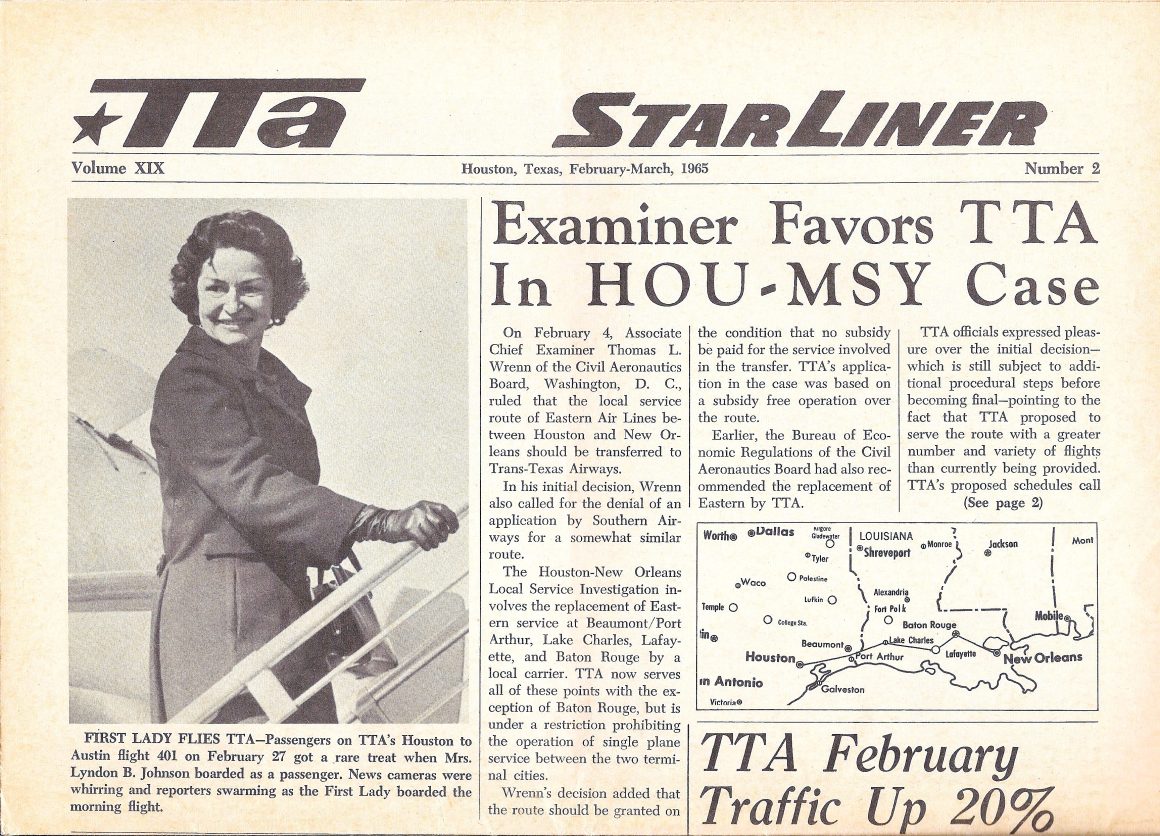
The first of TTA’s Convairs entered service on 1 April 1961.
THE COWGIRL UNIFORM GETS AN UPGRADE
Along with the new aircraft came new flight attendant uniforms. In keeping with the tradition of dressing hostesses (as TTA referred to its cabin staff) in a Texas-themed wardrobe, new outfits from Dallas-based Neiman-Marcus were introduced. The uniform included ‘Convair red’ coats and western-style ties. A modern version of the cowgirl hat and vest was still part of the ensemble.
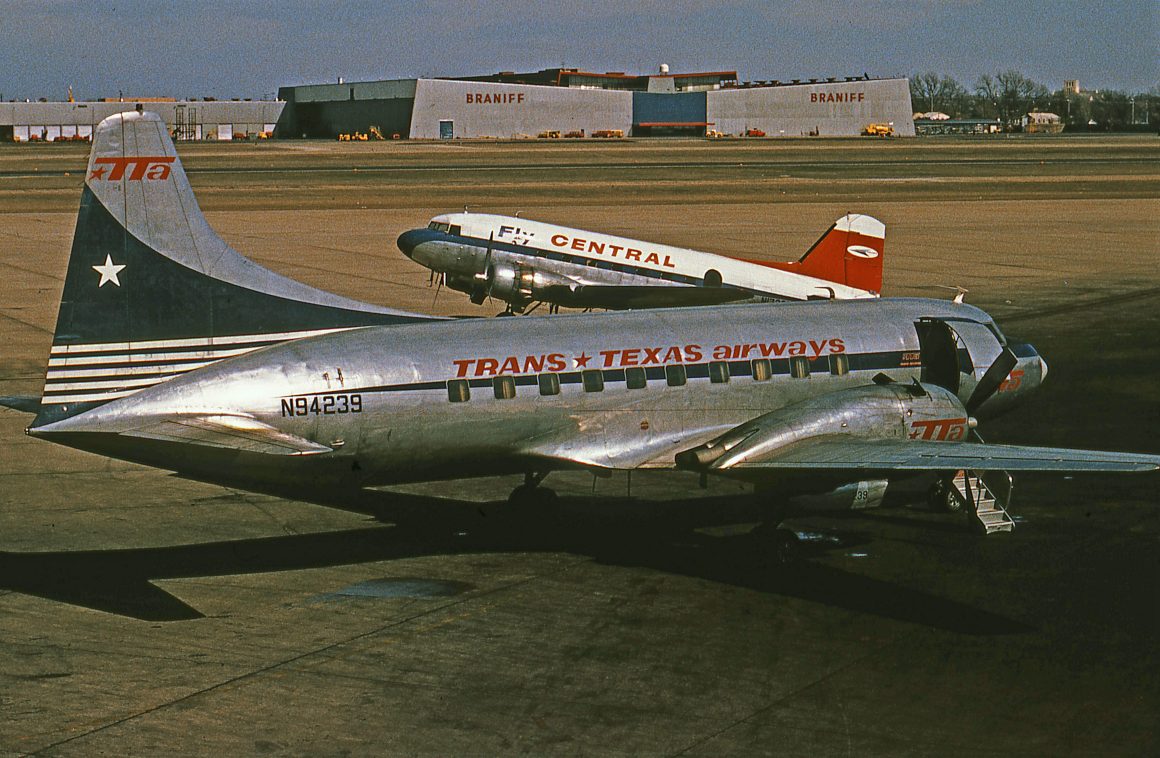
MORE ROUTE EXPANSION
In 1963, TTA gained access to 13 new stations in Texas and New Mexico, primarily by replacing Continental Airlines’ service previously offered to these communities. The cities that became new destinations for Trans-Texas included Abilene and Big Spring in Texas and Hobbs and Carlsbad in New Mexico. In this same CAB case, the Board also allowed more liberalized operating authority over TTA’s existing system, permitting non-stop service over several important routes, most notably Dallas—Houston.
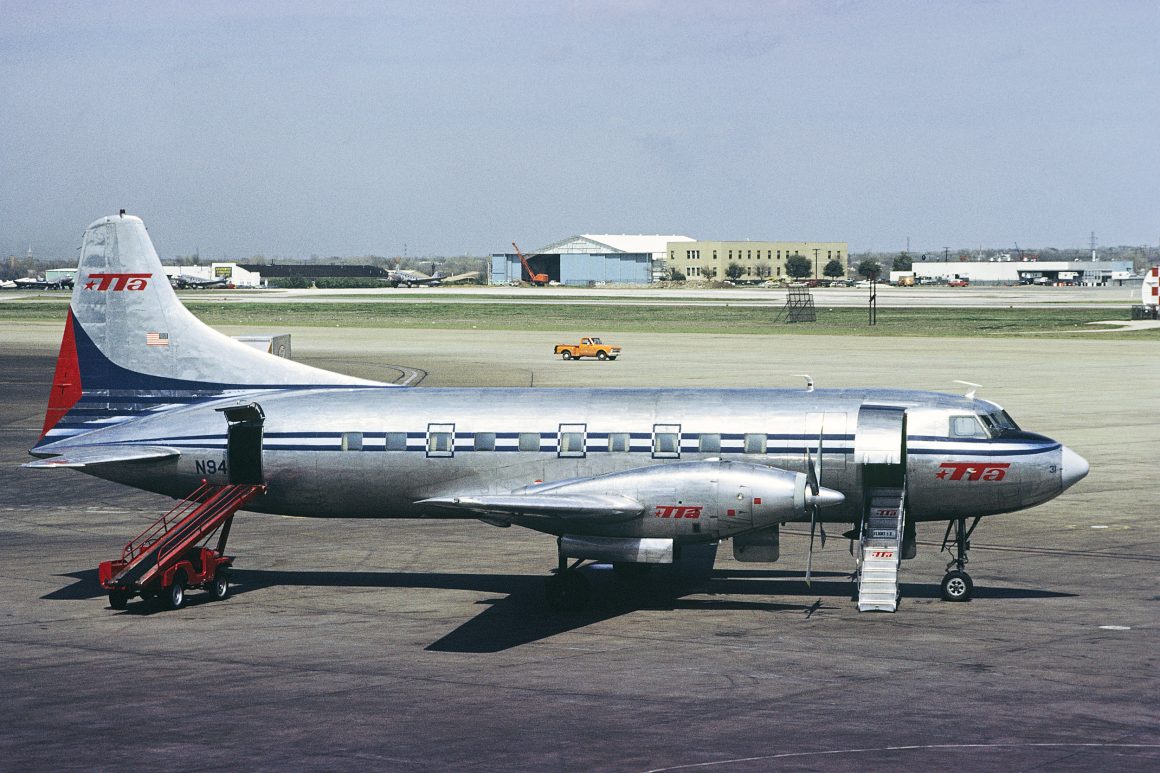
TURBOPROPS
TTA management decided to convert the entire fleet of Convairs to prop-jets. The Convair twins were well-suited for turboprop conversion.
The Convair Division of General Dynamics developed a conversion for the 240 using Rolls-Royce Dart engines. The resulting airliner was dubbed the Convair 600. Trans-Texas chose to perform all of its conversions ‘in-house’ using kits supplied by Convair. Introduced into service on 1 March 1966, TTA referred to its jet-prop Convairs as ‘Silver Cloud 600s’.
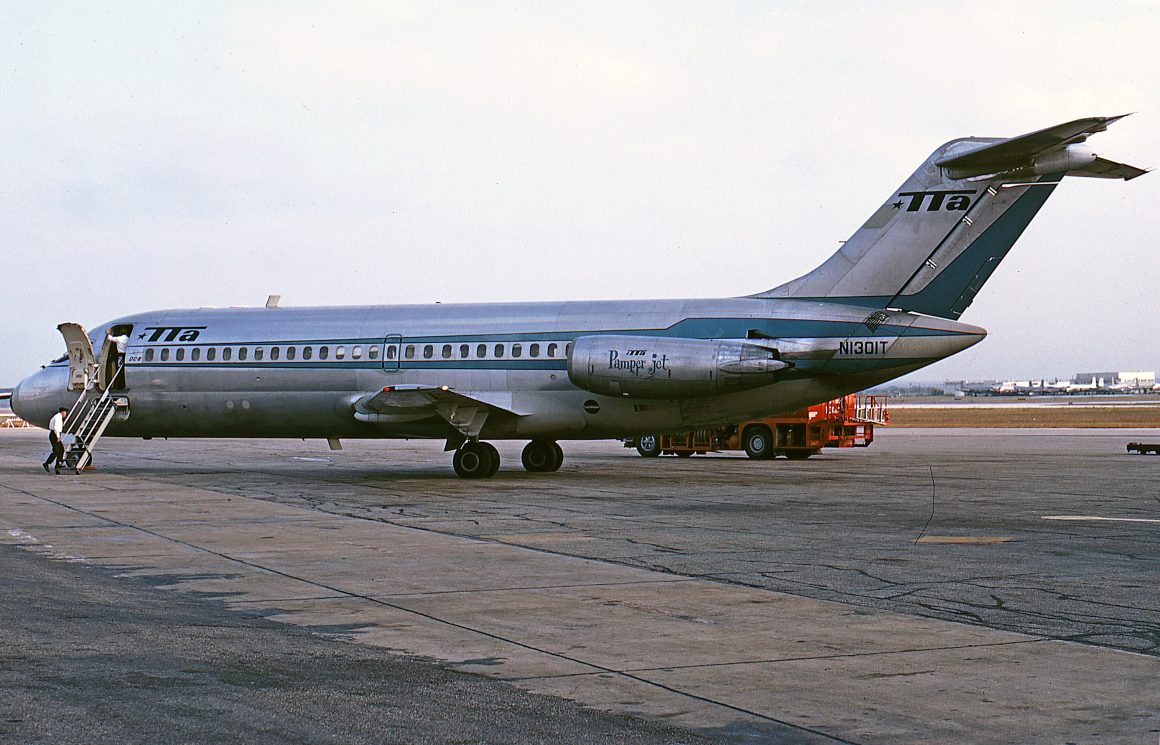
PAMPER JETS
Trans-Texas ordered seven Douglas DC-9s (DC-9-14s and DC-9-15MCs – ‘Minimum Change’ for conversion to cargo aircraft) and called them ‘Pamper Jets’. The airline’s first DC-9s entered service on 30 October 1966.
TTA’s next step forward was formalized on 18 July 1966, when President Lyndon Johnson approved the airline’s becoming an international US flag carrier. Permission was granted for Trans-Texas Airways to operate between Mission / McAllen / Edinburg, Texas, and Monterrey, Mexico, and to serve Tampico and Veracruz from Harlingen.
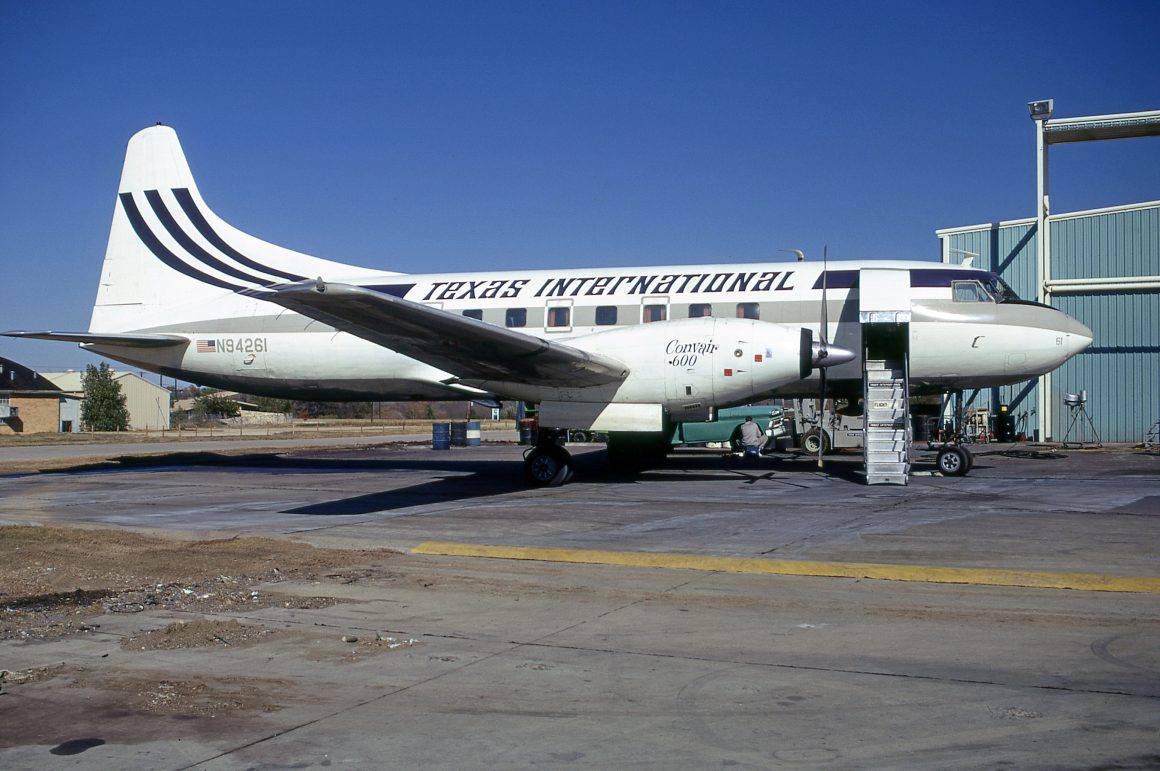
TEXAS INTERNATIONAL – TI
Earl McKaughan had founded Trans-Texas Airways in the 1940s and nurtured the company through two decades before turning command over to his son. Now, after more than twenty years at the helm, the McKaughans accepted an offer made by Carl Pohlad and Minnesota Enterprises, Inc. to purchase TTA. The deal was finalized in 1968.
Trans-Texas had been an excellent name for a local service airline serving routes primarily within Texas and its neighboring states. But TTA was now flying jets, and it was the US-designated flag carrier to 3 destinations in Mexico. Because management had marketed the airline by its initials, TTA, some wisecracking members of the public had begun referring to the company as ‘Tree Top Airways’ or ‘Tinker Toy Airlines’.
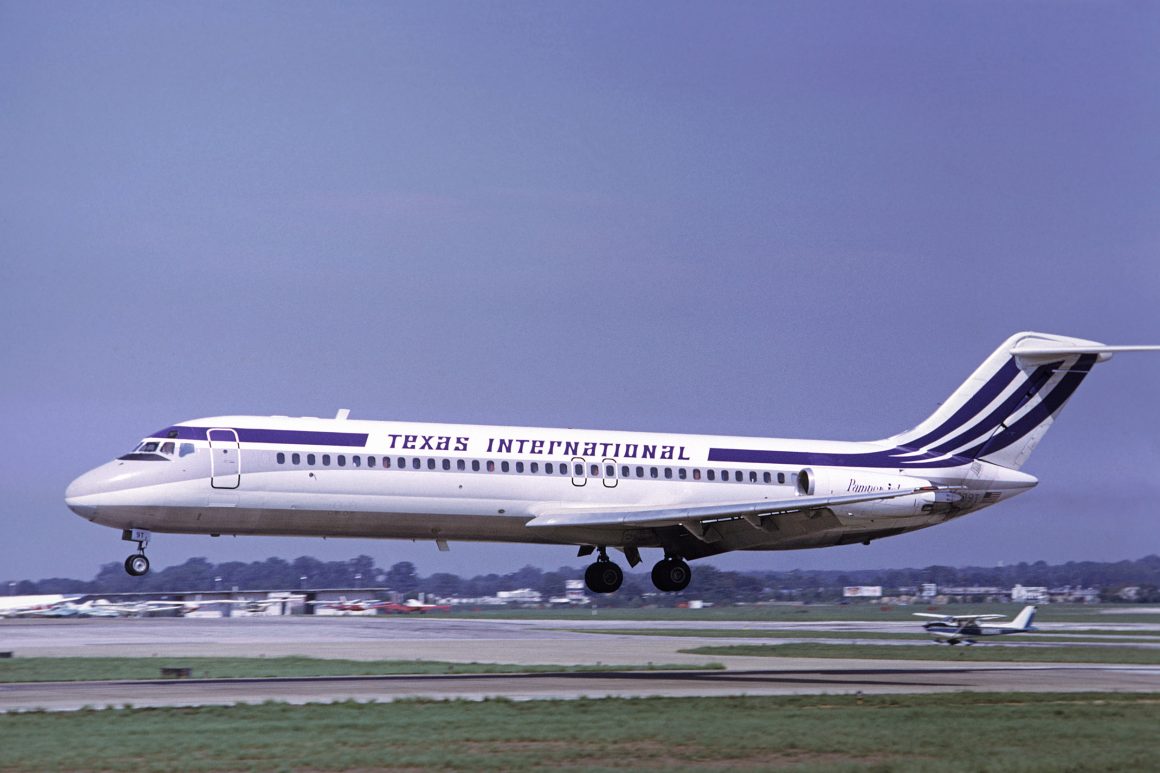
In a move to keep identification with the State of Texas alive while embracing the broader market being served, TTA shareholders agreed to change the company’s name to Texas International Airlines, to be referred to by its initials, TI. The name change took place on 1 April 1969, and with it came new corporate colors of purple, white, and gray, which were applied to the aircraft fleet.
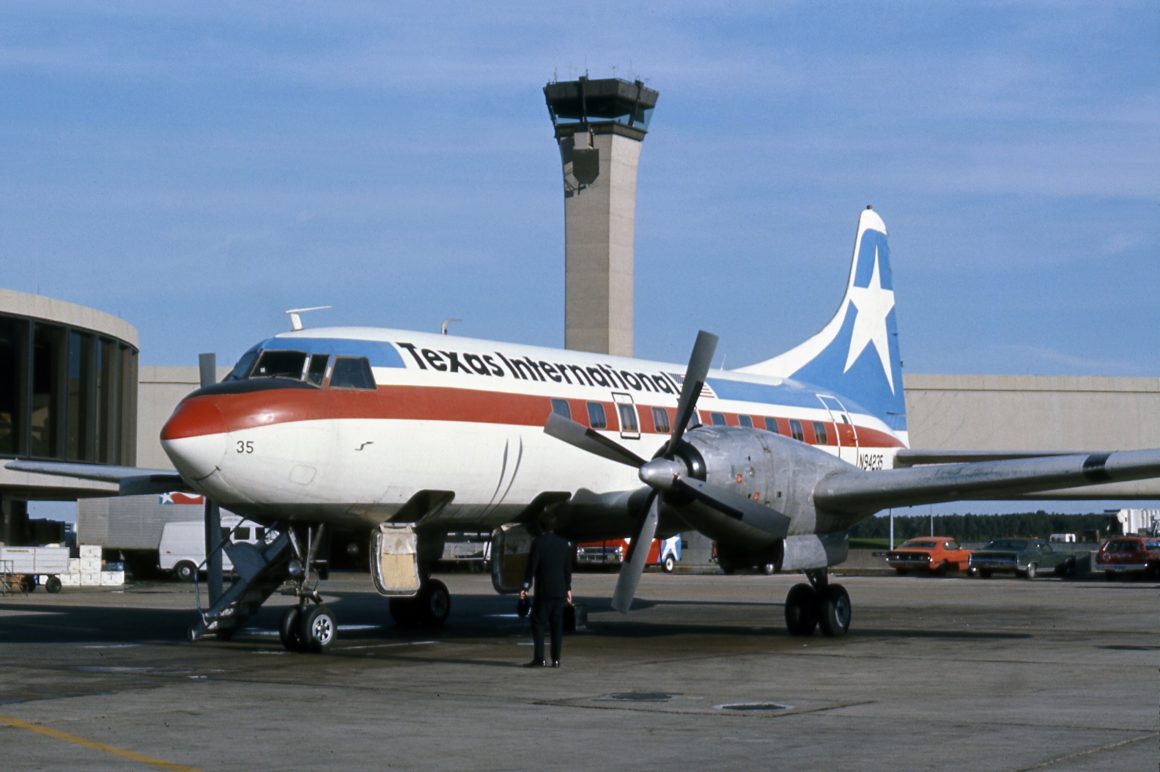
THE FRANK LORENZO ERA
Despite new routes intended to boost revenue, the company was in desperate financial trouble. A new name and new branding were of little help in stopping the airline’s rapid descent towards bankruptcy. With a $6 million per year loss recorded since 1968, and past debts due of $20 million, a new savior had to be found.
Jet Capital Corporation, owned by Francisco “Frank” Lorenzo and Robert J. Carney, purchased Texas International Airlines in 1972 and began the process of reviving it.

Another new paint scheme was applied to the company’s fleet. This one once again honored the airline’s Texas heritage with a red, white, and blue livery and the state’s ‘lone star’ painted on aircraft tails.
Frank Lorenzo implemented changes that focused the airline’s routes on its hubs in Houston and Dallas / Fort Worth. He was helped immensely by the sudden ‘sunbelt’ growth boom, with Houston at its center, after the Arab oil embargo of 1973. In 1976, the company posted a profit of $3.2 million, quite a turnaround from the dark days of 1972.
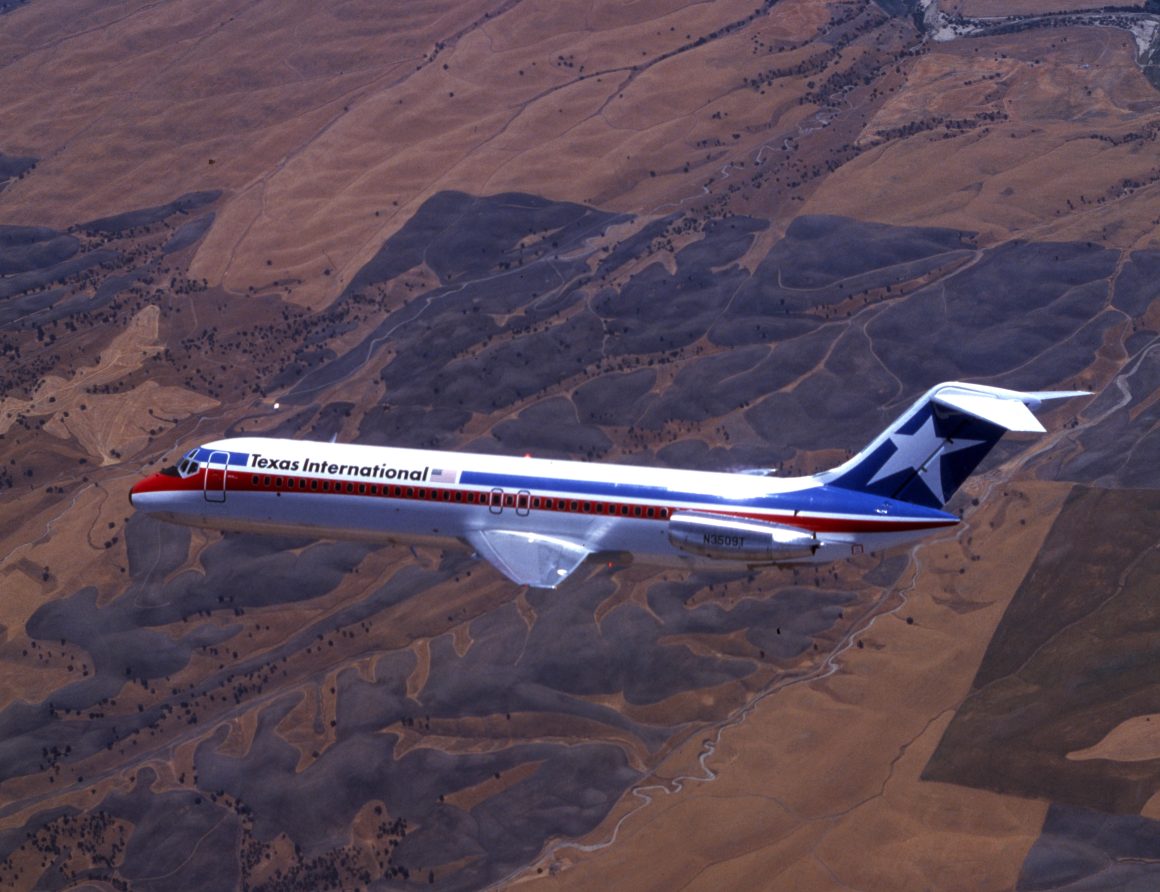
PEANUTS FARES
Texas International Airlines was competing head-to-head with the new, low-cost carrier Southwest Airlines. Lorenzo successfully petitioned the CAB to allow TI the flexibility of offering reduced fares on major routes. Dubbed ‘Peanuts Fares’, Texas International made itself known in the U.S. domestic airline market with the introduction of these lower rates in 1977. By August of that year, TI’s load factor reached 63.1%, the highest among any of the airlines that were still labeled as local service carriers.

TEXAS AIR CORPORATION
President Jimmy Carter signed the bill, deregulating the US airline industry law, on 24 October 1978.
Frank Lorenzo became the poster boy for airline leaders making the most of the new business environment. In 1980, he created Texas Air Corporation as a holding company under the umbrella of Texas International Airlines.
CONTINENTAL AIRLINES
In 1982, Texas Air Corporation purchased Continental Airlines, one of several carriers that had not fared well in the deregulated environment. Lorenzo then merged Texas International with Continental, and although TI was technically the surviving carrier, Continental’s name was retained. On 1 June 1982, the Texas International name was retired, bringing an end to the 35-year history of the Lone Star state’s own airline.

